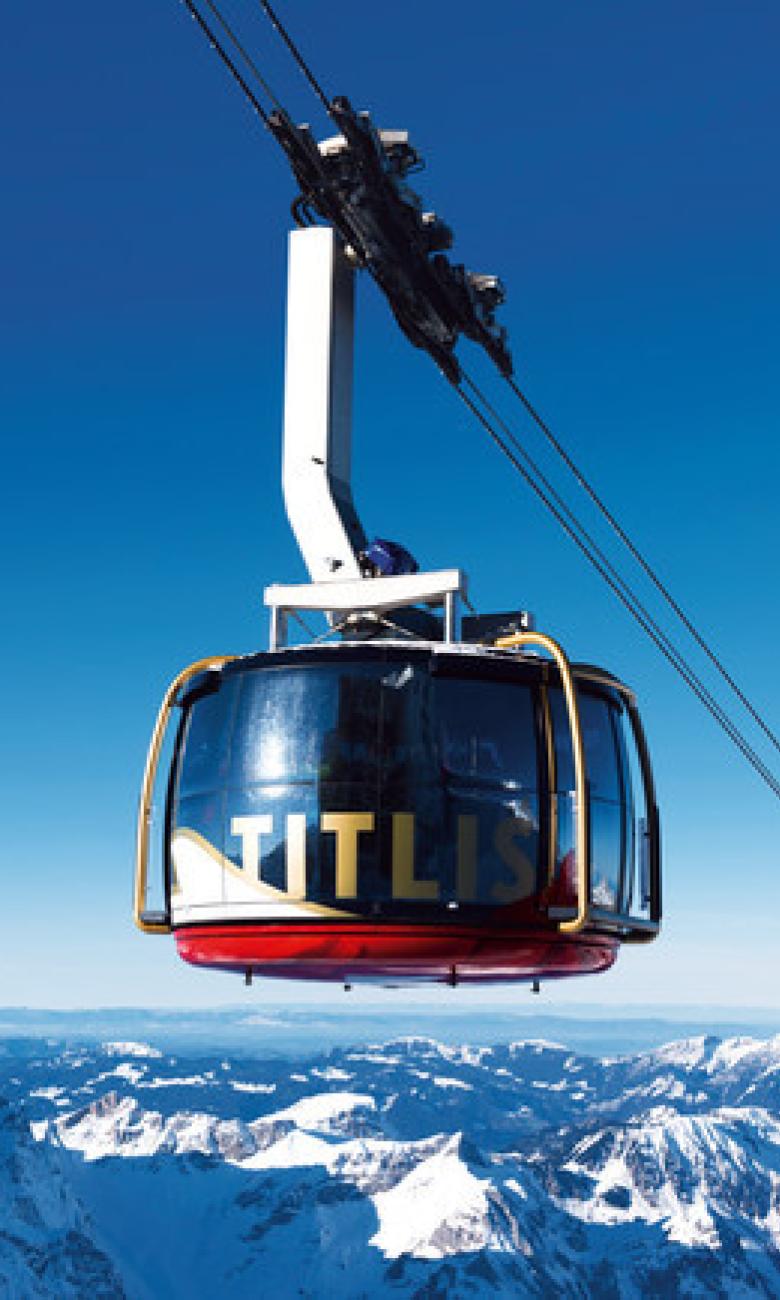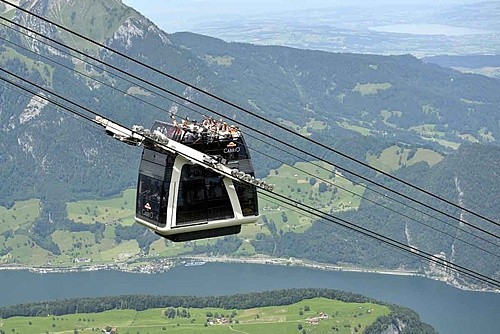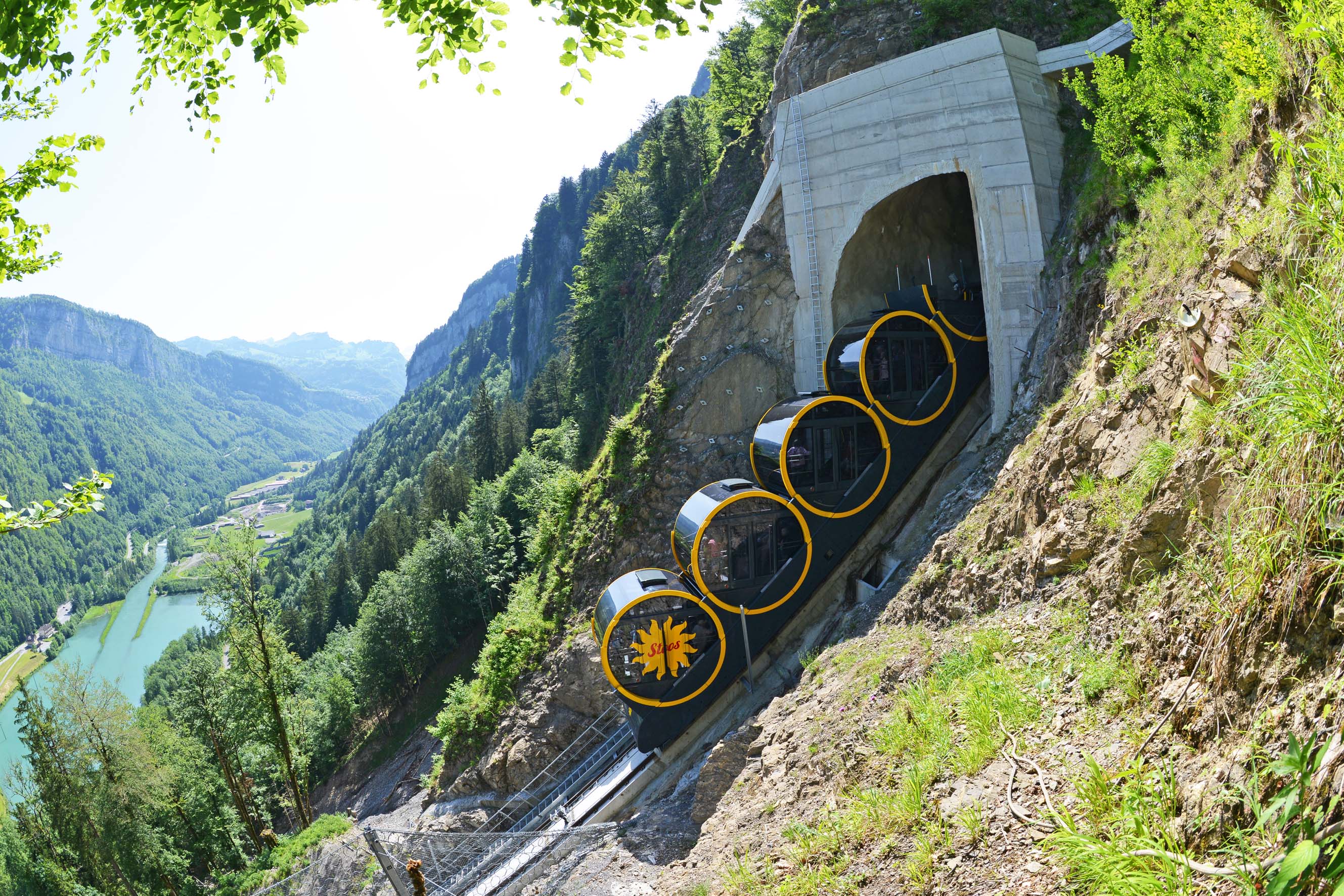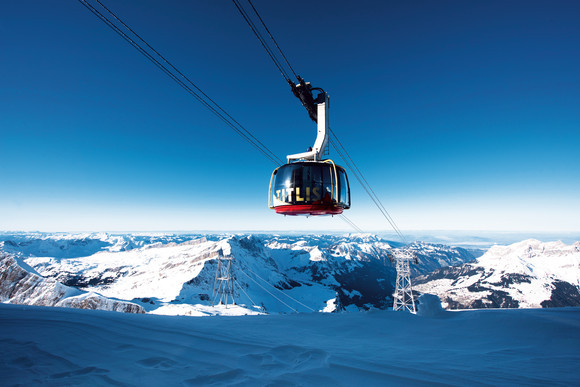The Garaventas: the Swiss cable car pioneers
Like Nestlé and Maggi, Garaventa is another Swiss business success story that all began with immigration. The company founded by the Garaventa family is now the global leader in cable transport systems.
Garaventa is a name seen in high places. Like the Fun'ambule funicular in Neuchâtel and the ultra-modern Stoos funicular in the canton of Schwyz. Or the CabriO open-top double-decker cable car on the Stanserhorn, and the world's first revolving cable car in Titlis. Then there's the Zugspitze cable car – on Germany's highest mountain at almost 3,000m – with the world's greatest overall vertical rise and longest unsupported rope span. There's also the Portland Aerial Tram in the US state of Oregon, and the giant double-decker cable car over Halong Bay in Vietnam where each cabin holds 230 passengers.

Garaventa, founded in Arth-Goldau in central Switzerland, has a background similar to that of other Swiss industrial giants. Like Julius Maggi, Henri Nestlé or Nicolas Hayek, whose business ventures went on to become stalwarts of the Swiss economy, Garaventa also has its roots in immigration. Giuseppe Garaventa, an illiterate labourer from a village north of Genoa, came to Switzerland in the late 1850s in search of seasonal work. One of Giuseppe's brothers emigrated to the United States: his daughter would later become the mother of Ol' Blue Eyes himself, Frank Sinatra. But back to Switzerland, where Giuseppe took on a variety of jobs – in mining, railway construction and tunnel-building, even working on the first Gotthard rail tunnel under engineer Louis Favre. He later obtained a blasting contract for a rack railway in central Switzerland. Here he married and settled down (going by the German version of his name, Josef) and had four children. He died in 1917 at the age of 81.

A boost from tourism
Giuseppe's son Karl was passionate about all things technical and built everything from pumps and wine presses to even a motorcycle. Karl Garaventa worked as a logger on one of the region's most iconic mountains, the Rigi. Felling trees on mountainous terrain was a dangerous and difficult job. In the 1920s, around the time he was naturalised as a Swiss citizen, Karl began to build cable systems for transporting tree trunks. His early attempts were rudimentary but he refined his systems over time. In the early 1940s he converted one of his timber lifts into a passenger transport system. His two sons, Karl Jr (1922–89) and Willy (born in 1934), frequently joined him in his work. They took over the family business in 1956 and founded Karl Garaventa & Sons. "We won a lot of contracts from mountain transport companies and business really took off," recalls Willy Garaventa, now 85, in a biography published (in German) in 2019 in Switzerland.

The Garaventas benefited from the rise in popularity of mountain tourism, with more and more orders coming in for cable cars, gondolas and ski lifts all over Switzerland. In time, the company gained a reputation far beyond its central Swiss origins. Their first international project was in Egypt in 1964 – a crane carried by cable over the Nile. Next the United States came calling. California's Squaw Valley ski resort in the Sierra Nevada had hosted the 1960 Winter Olympics and business was booming. The Garaventa brothers won the contract to build a new 'aerial tramway' climbing up to 2,500m, opening just in time for the 1968 Christmas season. To show just how strong the system was, Bertha the baby elephant was given a ride in a cabin – a promotional stunt repeated in Bavaria a few years later with another elephant.
Urban cable cars
With their worldwide reputation, the Garaventas' Swiss-made cable cars and cabins were being installed just about everywhere – from Greenland to Salt Lake City, from Canada to Sri Lanka. After Karl Jr passed away in 1989, Willy found himself alone at the helm. He retired in 1993 on health grounds and, as neither of his daughters wanted to take over, the company was sold to two of the management team. In 2002, Garaventa merged with Austrian firm Doppelmayr, forming the industry leader worldwide. How did Willy Garaventa take this? "I had mixed feelings. But I was relieved because we knew Doppelmayr well and I'm glad our company still exists," he says.
Garaventa has also had its share of dark days. There were accidents over the years, each one felt by Willy as a personal tragedy. There was also a difficult period in the 1970s when the buyers of the Hochfelln ski lift in Bavaria faced bankruptcy. "They couldn't pay us," recalls Willy. With Garaventa itself then on the brink of collapse, the two brothers took over temporary management of the business, doing the rounds of the banks for the finance they needed and putting up their personal assets as security. After 10 years of uncertainty, the Hochfelln ski lift finally turned a profit.
Today, Doppelmayr-Garaventa is known for its constant innovation and state-of-the-art technologies. "My brother and I always strove for innovation and I think we had a good feeling for surrounding ourselves with the right people for that," says Willy Garaventa. Speaking of innovation, he sees further openings for the company in urban cable cars. "I see cable cars as the future of urban mobility," he predicts.

* Willy Garaventa. Biografie des Seilbahnpioniers [Willy Garaventa: biography of the cable car pioneer], by Rebekka Haefeli, 216 pages, Editions Hier + Jetzt, Baden, 2019.
Translation of article by Bernard Wuthrich, Bern, published in Le Temps, June 2020
https://www.letemps.ch/suisse/schwytz-une-famille-virtuoses-cable
Cover image: Funicular railway Stoos © Doppelmayr/Garaventa




